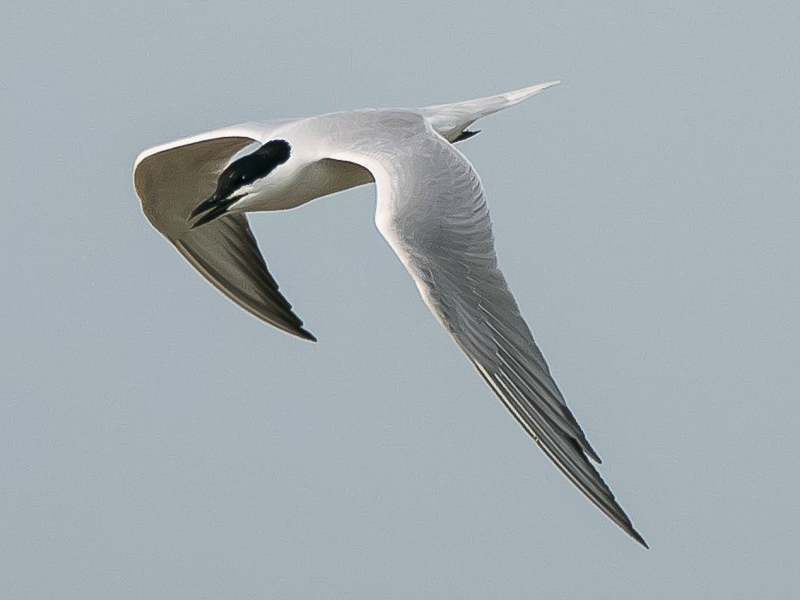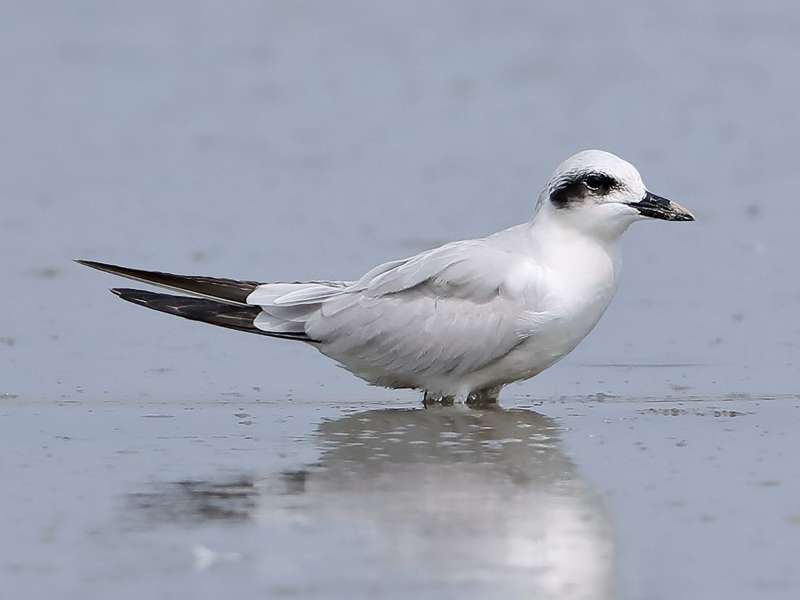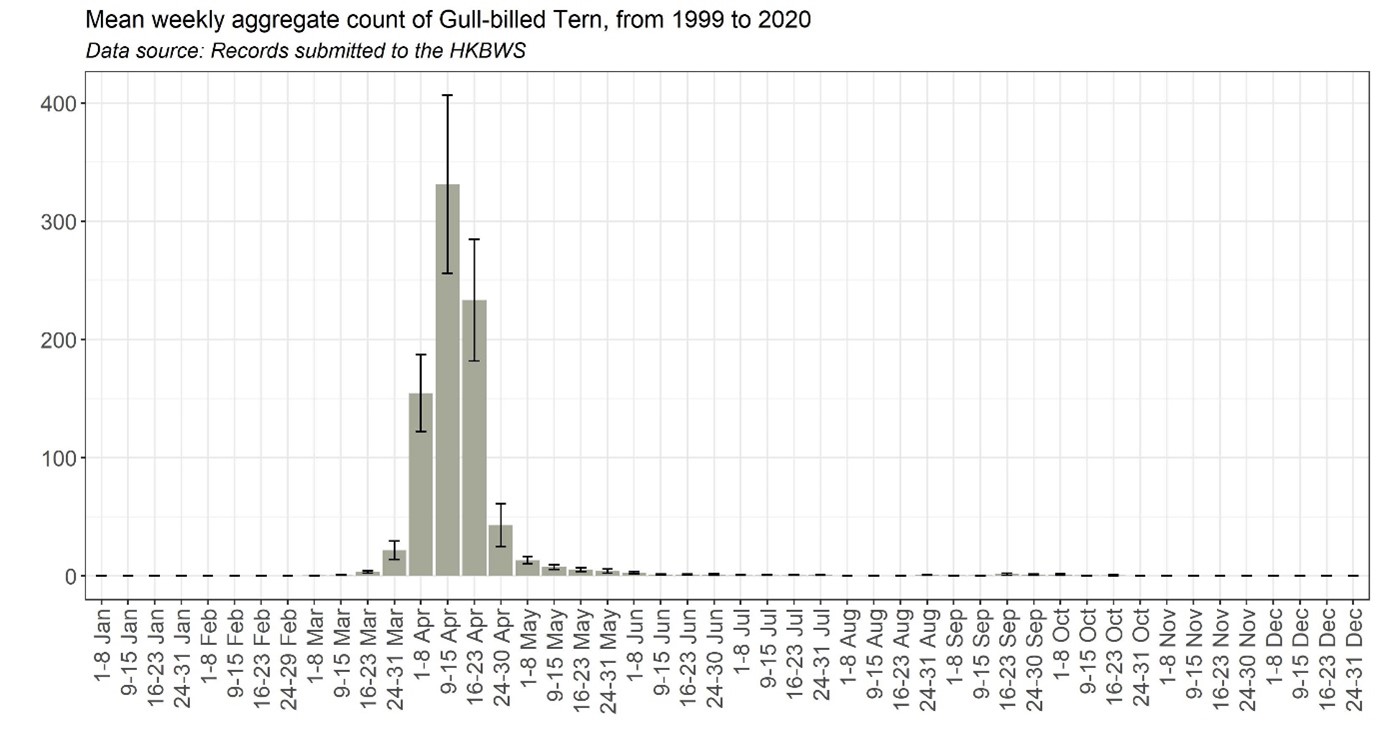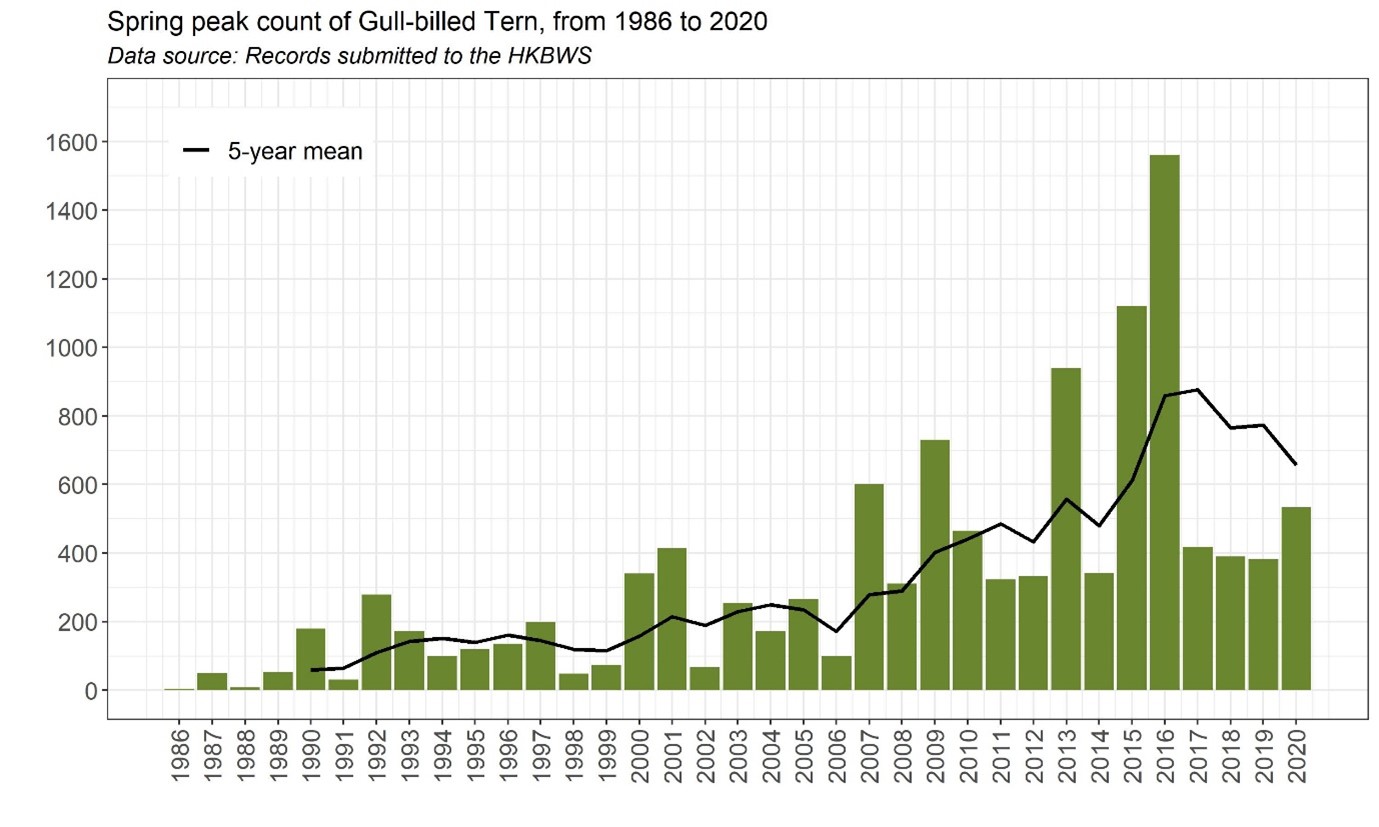Gull-billed Tern Gelochiledon nilotica 鷗嘴噪鷗
Category I. Passage migrant mainly through Deep Bay, abundant in spring, rare in autumn.
IDENTIFICATION

Apr. 2018, Michelle and Peter Wong. Adults, breeding plumage.
33-38 cm. Differs from Common Tern in larger size, shorter, thick black bill and broader base to wings. Does not plunge dive, instead flies over mudflat before swooping down on prey in the manner of Saunders’s Gull. Adult in breeding plumage has crown, nape and hindneck black.

Apr. 2021, Kenneth Lam. Adult, breeding plumage.
In flight shows pale grey upperparts including slightly paler rump and white sides to the whitish-grey tail, relatively plain upperwings in spring that have slightly darker outer five primaries and broad dark trailing edge to underside of primaries.

Apr. 2018, Michelle and Peter Wong. Second calendar-year.
Adult in non-breeding plumage and first-winter birds have isolated dark mask behind eye. Juvenile has pale fringes and dark subterminal marks on upperpart feathers, and a poorly-marked small mask behind eye.
VOCALISATIONS
The typical flight call is an inflected ‘kiri-wak’ or ‘ki-wek’ uttered singly or in series, as in the following recording.
Flocks of birds are often highly vocal.
DISTRIBUTION & HABITAT PREFERENCE
The highest numbers are reported from the intertidal areas of Deep Bay and adjacent roosting areas on Mai Po NR; up to 60 birds are occasionally recorded in fish pond areas. Small numbers of birds, usually no more than three, are also recorded in inshore and coastal waters, although up to 46 have been recorded in a day on migration over southern waters.
OCCURRENCE
Gull-billed Tern is primarily a spring passage migrant with most birds passing through in the first three weeks of April (Figure 1). There are a small number of records in January and February, all since 2017. A few migrants occasionally appear in the first half March, these mostly since 2013. Spring migration is obvious from the middle of March, but the first three-figure counts only occur right at the end of the month. The highest numbers generally occur in the second week of April.
Numbers gradually decline from the last week of April into June, and in July and August no more than single-figure counts have been made. Autumn passage is very weak and appears to largely occur in the second half of September and first half of October. The highest counts at this time are 40 in the Tolo Channel on 11 September 1975 and 21 at Mai Po on 23 September 2013. The latest autumn record is of one on 28 October 2018.
Peak spring counts are somewhat variable. There was an increasing trend until 2016, when the highest count on record occurred: 1,561 on 12 April. The five-year mean of peak counts indicates a decline has occurred subsequently but are still at a higher level than for much of the previous 20 years (Figure 2).
BEHAVIOUR, FORAGING & DIET
Gregarious and highly visible, forms noisy flocks at roost in ponds on Mai Po NR. Birds forage independently on the mudflats swooping steeply down to collect prey, which includes crabs and mudskippers.
RANGE & SYSTEMATICS
Very wide breeding range that includes most of southern Europe, the Black and Caspian Sea areas, the Middle East, Indian subcontinent, southeast Asia, China and east Asia and both North and South America (Molina et al. 2020). In China the nominate taxon breeds in Xinjiang while affinis breeds in northeast China mainly around the Bay of Bohai and is a migrant through much of the country (Liu and Chen 2020).
Five subspecies are recognised, of which G. n. affinis breeds in Japan and China south through southeast Asia to the Philippines, Sumatra, Sulawesi and Borneo. The nominate occurs from west China west as far as Europe while the remaining taxa occur in the Americas.
CONSERVATION STATUS
IUCN: Least Concern. Population trend decreasing.
Figure 1.

Figure 2.

Liu, Y. and Y. H. Chen (eds) (2020). The CNG Field Guide to the Birds of China (in Chinese). Hunan Science and Technology Publication House, Changsha.
Molina, K. C., J. F. Parnell, R. M. Erwin, J. del Hoyo, N. Collar, G. M. Kirwan, and E. F. J. Garcia (2020). Gull-billed Tern (Gelochelidon nilotica), version 1.0. In Birds of the World (S. M. Billerman, Editor). Cornell Lab of Ornithology, Ithaca, NY, USA. https://doi.org/10.2173/bow.gubter1.01

